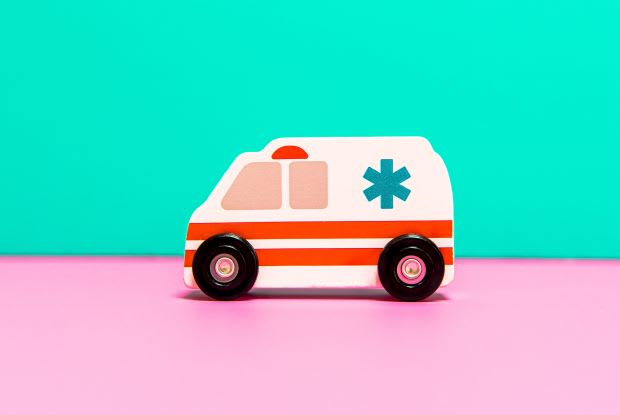Table of Contents
I. Anticipating an Asthma Attack
II. Steps to Take with an Inhaler
III. An Asthma Attack Without an Inhaler
Anticipating an Asthma Attack
Asthma is a chronic lung disease that does not always cause symptoms. Those with asthma may experience periods where the airways function normally and breathing is stress-free. But asthma patients can experience a sudden onset of symptoms when triggers are present. When you experience severe symptoms, you may be experiencing an asthma attack. [1]
If you can anticipate an asthma attack, you can take steps to avoid it. To successfully anticipate asthma attacks, take note of your personal asthma triggers. Do you have allergic asthma? Does your asthma act up during cold or hot weather? Common asthma triggers include:
- Dust mites
- Tobacco smoke
- Outdoor air pollution from car exhaust or wildfire smoke
- Pests like cockroaches and mice
- Pet dander
- Mold
- Certain cleaning products and disinfectants [2]
Once you have identified your asthma triggers, you can steer clear of them and reduce the number of attacks you experience. Even if you know your triggers, unexpected flare-ups can still occur. Because asthma attacks can still happen despite your best preventive efforts, always carry your emergency quick-relief inhaler with you.
Long-term asthma medication can reduce the frequency of asthma attacks. If you are diagnosed with asthma, ask your doctor about long-term asthma medications for symptom control. Asthma medicines like Flovent Diskus, Advair HFA, and Ventolin inhaler can help reduce the severity and frequency of asthma flare-ups. What you should do during an asthma attack depends on the presence of your quick-relief inhaler. Read on to learn about the steps for how to survive an asthma attack, both with and without an emergency inhaler. [1] Ideally, you will want to have access to your quick-relief inhaler during an asthma attack. You want to keep this one close, like in your backpack or purse. If you start to feel symptoms of an asthma attack, do not lie down. Instead, sit upright and try to remain calm. Panicking will only worsen symptoms, so focus on your breathing if possible. Take one puff from your quick-relief inhaler every 30 to 60 seconds for a maximum of 10 puffs. If you do not feel better after 10 puffs, call for medical assistance. Repeat the process of one puff every 30 to 60 seconds if the ambulance has not arrived in 15 minutes. If you feel worse after using your quick-relief inhaler, do not hesitate to call for emergency help. When you leave the hospital after experiencing an asthma attack, you should see your family doctor within 48 hours to assess your condition. At this doctor’s appointment, you can ask about ways to reduce your risk of a recurring attack. Inform your doctor if you experienced a new trigger so that your treatment plan can be adjusted accordingly. After an attack, do not ignore any discomfort caused by symptoms and see your physician if your symptoms continue to disrupt your breathing. [3] If you experience an asthma attack and do not have access to your rescue inhaler, call for emergency medical treatment. While you are waiting for help to arrive, you should still sit up and stay calm. Steady your breathing by inhaling and exhaling slowly through the nose instead of the mouth. If you are still in the vicinity of air pollution, airborne allergens, or other triggers, move away from the area promptly. Asthma triggers can worsen symptoms in addition to causing the attack. If your asthma flare-up is not severe and only causes mild symptoms, home remedies may help. A research review in 2010 found that drinking caffeinated tea or coffee may open the airways and improve asthma symptoms for up to four hours. Eucalyptus or lavender essential oils may help to reduce inflammation in patients with allergic asthma. Essential oils are typically administered by inhaling their vapors. However, the FDA does not regulate essential oils, so only attempt home remedies when symptoms are not life-threatening. [4] As mentioned in the beginning, the identification and avoidance of your triggers is the most effective way of preventing asthma attacks. But what are some concrete steps you can implement to make your environment more asthma-friendly? Generally, you can reduce the risk of asthma flare-ups by: It is also important to create an asthma plan with the help of your doctor. If you are prescribed Advair, Flovent, or Ventolin as part of your asthma treatment plan, order them from Canada Med Pharmacy at a discount price today. [4] The content in this article is intended for informational purposes only. This website does not provide medical advice. In all circumstances, you should always seek the advice of your physician and/or other qualified health professionals(s) for drug, medical condition, or treatment advice. The content provided on this website is not a substitute for professional medical advice, diagnosis, or treatment.
Steps to Take with an Inhaler

An Asthma Attack Without an Inhaler

Preventing Asthma Attacks
